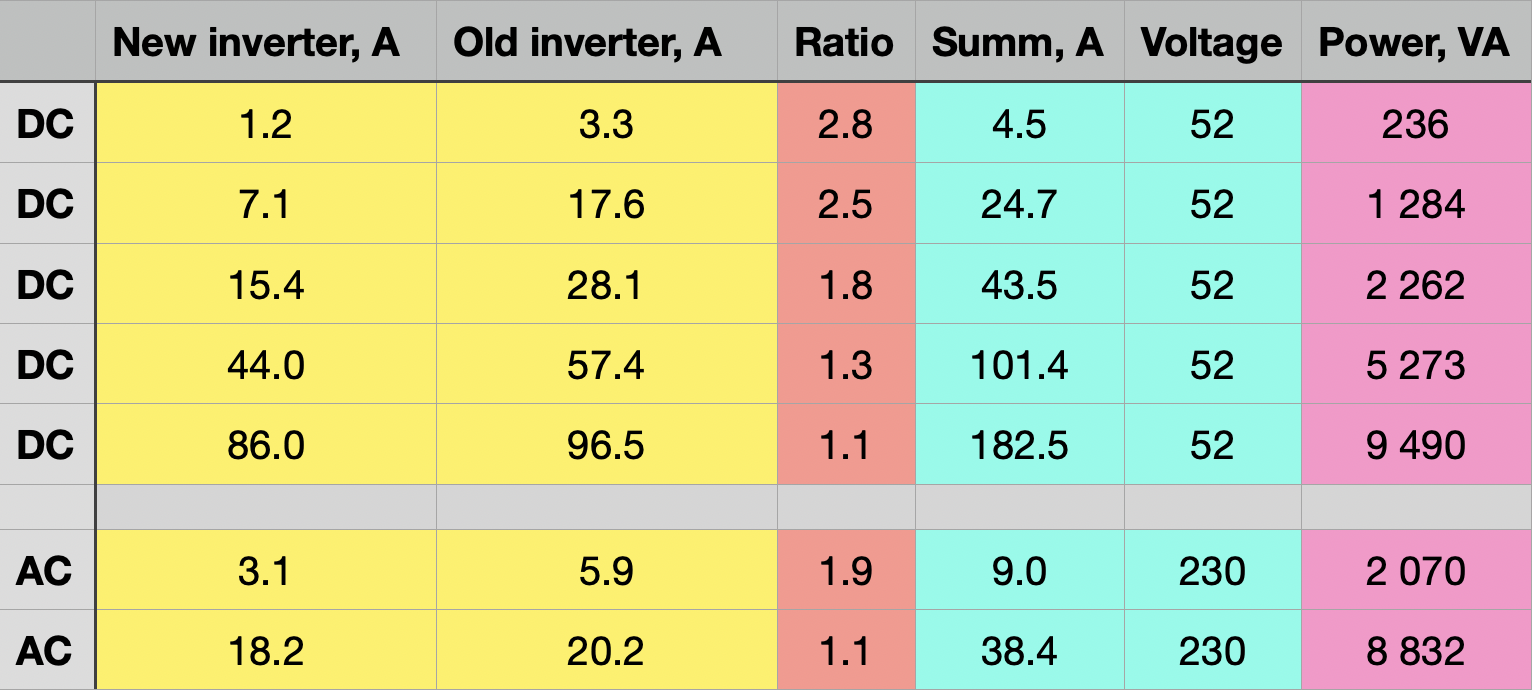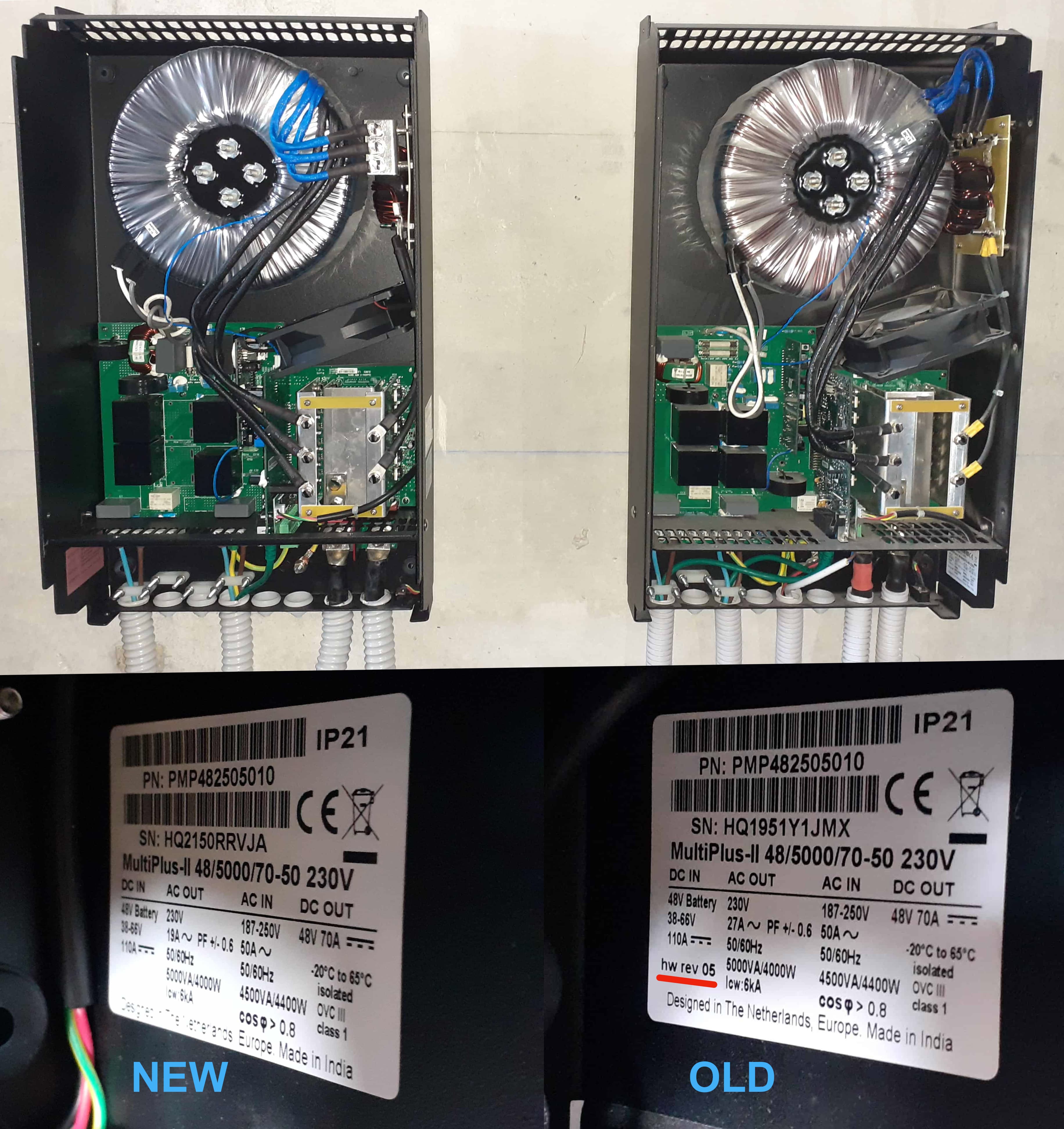Hello colleagues! I need your help. I will be glad if the Victron staff can answer me, as this is important and now it is urgent. I also hope that the information below will be useful to other installers. I have installed dozens of Victron Energy systems, including three-phase (with three units) and single-phase (with one and two units), and they all work very well. Until 2022, I did not encounter the need to add parallel blocks to an already existing system.
Last year, I needed to add a second inverter to one already running in a single-phase system. Both inverters were of the same modification: MultiPlus-II 48/5000, had the same "product ID" 2623 and the same "PN" PMP482505010. The only difference between the inverters was that one of them was bought two years earlier than the other.
Of course, I carefully studied these official documents from Victron:
Parallel, split- and three-phase VE.Bus systems
VE.Bus firmware versions explained
The official documentation says: "All units in one system must be the same type and firmware version, this includes the same size, system voltage, and feature set. The type is indicated by the first four digits of the firmware version number."
It also says "For units in parallel: Both the DC and AC wiring needs to be symmetrical per phase: use the same length, type and cross-section to every unit in the phase. To make this easy, use a bus-bar or power-post before and after the inverter/chargers. Also, apply the same torque on all connections." ... and so on.
But as practice has shown, all this is not enough, and if "same type" blocks have different hardware revisions, then they may not work smoothly when connected in parallel. But this is not mentioned in the documentation.
Before adding the second inverter, I updated the firmware of both inverters to the latest version 496 at that time, and then configured them for parallel operation with identical settings. The AC and DC cables between the busbars and each inverter had exactly the same length, type and cross section (6 mm² for AC and 70 mm² for DC). The fuses were exactly the same for each block, and all terminals were tightened with the same torque. And despite all this, the old inverter was loaded more than the new one.
At full load the difference is about 10%, at light load it is about 300%. This resulted in the cooling fan running on only one inverter at medium loads, and when approaching maximum load, the "Overload" LED also flashes on only one inverter. As a result, it is impossible to get the maximum power of both inverters, since one of them will be overloaded earlier and turn off the entire system. I am attaching a screenshot with several current measurements at various loads. All measurements were taken with the external grid switched off, the MPPT chargers and the Fronius inverter were also switched off. I just turned on and off various loads and recorded the readings. The system was controlled by an Octo GX running the then latest version of Venus OS 2.87.

After fixing the results, I did some experiments, changing the length of the cables on the AC side to balance the load of the inverters, but it did not help. Even when I increased the length of the cables on one inverter several times over the other, it had very little effect on the load ratio between the inverters. For example, if at the same cable length at a certain load the ratio was 1.8, then when the cable length was doubled for a more loaded inverter and the same load, the ratio "improved" only up to 1.6. Even a tenfold increase in length for a more loaded inverter did not allow me to compensate for this imbalance. I changed the blocks in places, it did not help either. I carried out a similar experiment on the DC side, without getting the desired result. I even did additional tests without fuses on the AC and DC side to rule out their influence.
Having removed the front covers of the inverters, I found that their internal structure has many differences, that is, they are definitely different hardware revisions. At the same time, the hardware revision (05) was indicated on the old inverter, but it was not indicated on the new one (I am attaching a photo).

After researching similar situations in the Victron community, I found that other installers are also facing a similar problem.
Here is one of the most detailed situations where the user @MarekP was able to solve the problem only after replacing one of the blocks with a block with identical hardware revisions:
How to balance 2 MP-IIs in parallel
I ended up not being able to solve the problem at the time, and the customer was somewhat dissatisfied as he couldn't get full power from the two inverters.
But now I have a similar situation. A few months ago we installed one EasySolar-II 3000 (SN: HQ2230TPXDW, PN: PMP482307010) for our client. Now this customer has asked for a MultiPlus-II 3000 to be added in parallel to double the power. Two options are currently available in E-order: PMP482305010 and PMP482305012 (as far as I know, they are identical, but are produced in two different factories due to high demand). I'm afraid to face the same problem if the revisions of the already working EasySolar-II 3000 and the new MultiPlus-II 3000 are different. At the same time, I can't find information anywhere on how to check the revision number by the serial number of an existing inverter, and how to find out the revision number of new inverters available in E-order before buying. Does anyone know this?
If they have different revisions, then it's better for us not to risk it and buy a more powerful EasySolar-II 5000 instead of the already working EasySolar-II 3000. Of course, then we will have a new problem - to sell someone the already used EasySolar-II 3000 with a loss of value, but at least our client will be happy with the result.
To summarize, I have two questions:
1. What should I do with the first system I couldn't balance last year? The client resigned himself to this state of affairs, but it cannot be said that he was satisfied. I would like to somehow correct this situation.
2. What should be done in the future in such situations, when it is necessary to add an additional inverter to an already operating system? How to check block revisions in advance?
Thank you!
